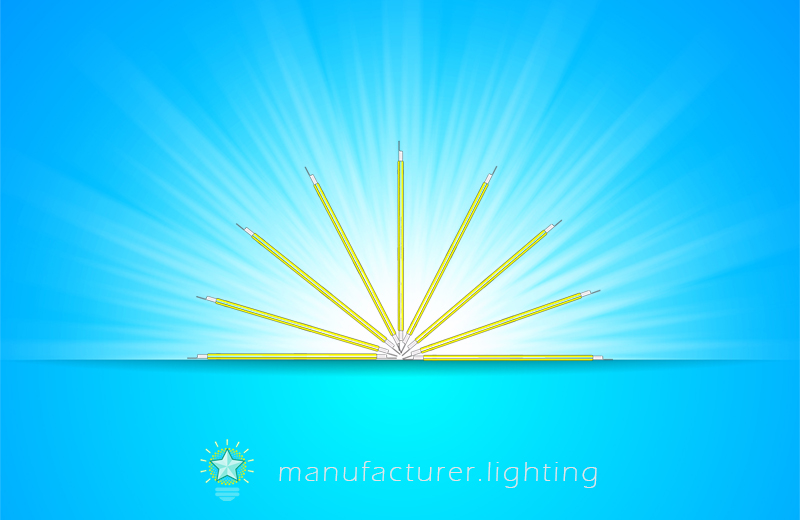
Increases in luminous efficiencies and diode luminous intensity have made possible the employment of light emitting diodes (LEDs) for general lighting applications. As a way to replace a tungsten filament bulb, a diode package is required to facilitate heat dissipation and increase both the luminous viewing angle and the radiation pattern. LED filament bulb is an emerging product available in the market that holds great market potential, with high visibility in the market. Whilst keeping the classy shape and shining light, the high quality light remains as clear and bright as an incandescent bulb and also they can offer up to a whopping 90 percent energy savings over conventional incandescent light bulbs. LED filaments are the core technology in LED filament bulbs, while other components are not too different from other LED bulbs. Filament LED is another type of Chip on Board LED. It is made up of board, chips, phosphor glue, Ag glue and gold wires. The filament is created using a series of low-power LED chips mounted on a thin narrow substrate and amalgamated by a metal trace, or jump-wire-bonded in series. The filament is encapsulated in a resin constructed from silicone and phosphor mixture that performs the typical transformation of the LED chips, blue light into white. Moreover, the filament can be ordered with some red LED chips to warm up the light spectrum. Filament LED could be Chip on Sapphire, Chip on Ceramic, Chip on Bronze or Chip on Glass. Sapphire is the best choice due to the fact the board needs to be transparent, thermal conductive and electric isolated. Ceramic comes to the second for its good thermal conductivity and cheap cost. Ceramic is a promising new LED substrate technology. One advantage is its ability to withstand high heat levels very well. Another advantage is its high voltage operation. However, the reflectivity, de-lamination, and cracking issues will need to be better resolved before a wider market acceptance will take place. Bronze is the last choice because it's not transparent and it's electric conductive but it's kicking Glass out.
